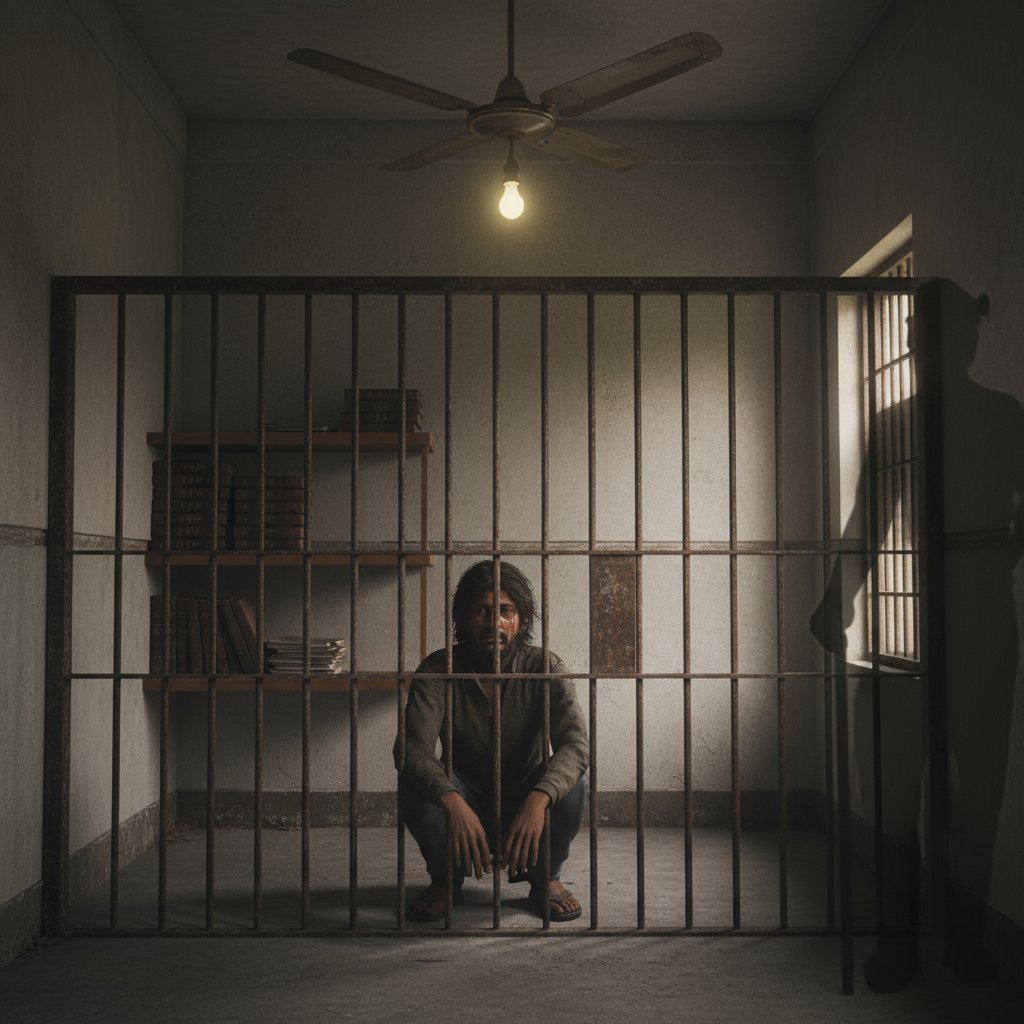Published On: 15th July, 2024
ABSTRACT
This case was the landmark judgment of the Supreme Court of India regarding capital punishment in the offence of murder (Sec 302 of IPC) in the rarest of the rare case. This case was decided by the 3 judge Bench which consisted of M.P. Thakkar, Syed Murtaza Fazalali, A.and Varadarajan, and decided on 20th July 1983. Section 302 deals with the punishment for the Murder either Death, Life Imprisonment, or a fine. The punishment is decided by the judges on the basis of the aggravating and mitigating factors. The death penalty was only given in the rarest of the rare cases which was more elaborated and certain guidelines were made in the following case.
INTRODUCTION
The above case was in the continuation of the Bachan Singh case as it was delivered after the 3 years of the latter. In the case of Bachan Singh, the judges held that in the rarest of the rare cases, only the Death Penalty must be given and in the present case, judges posed certain guidelines and precise and particular criteria and parameters to look out whether the following case falls under the Doctrine of Rarest of the Rare and should Death Penalty be imposed or not. According to Justice Thakkar’s ruling on behalf of the court, there are five types of cases that fall into the category of extremely rare cases that carry severe penalties.
They’re as follows:
Method of Murder: How heinous murder has been committed, e.g.: cutting the body into many pieces, pouring acid to dissolve the body, etc.
Motive and intention behind the murder: where the motive is totally cruel, mean, and evil, for e.g.: serial killing where the motive is totally, meaningless.
The intensity of the crime: How much does the particular act encompass the lives of innocent people like killing many people including females, children, old people of a single family, or of a particular caste or community?
Character of the victim: where the Victim falls under certain criteria;
- A tender child
- A vulnerable women
- Person of old age
- A person of great public influence
Anti-social crimes: where the crime is committed against a particular caste and community or the other instance is the dowry deaths because in this scenario one is taking the life of the other just for the sake of money.
FACTS OF THE CASE
17 murders took place in 5 different villages adjacent to each other in Punjab between 12 and 13 August 1977, 3 people were injured as well in this series of incidents which occurred due to the family conflict. The victims were not only men were also consisting of women and children. Machhi Singh was the prime accused who was at loggerheads with Amar Singh and his sister Piaro Bai. Along with 11 other accomplices, Machhi Singh made the plan of murder and implemented the same.
During the deadly attack, four Amar Singh members were targeted by the attackers and perished as a result. Amar Singh’s wife and his three sons are among the four victims. As fortune would have it, Amar Singh and his 10-year-old daughter Mohindo managed to flee the horrific attack and live to testify in court about the horrifying murder. Both Mohinder Singh and the appellant Machhi Singh had rifles. Each of their three friends had a kirpan. The appellant Machhi shot his wife while she was resting on the cot. Mohinder, the appellant, fired a shot at the son who was lying on a cot at the same moment that Machhi fired shots at the other sons.
Nine accused were given life sentences in prison, while Machhi Singh and three other defendants received the death penalty. And from here the real story began as there was a question on the constitutional validity of the Death Penalty in the case of murder.
ISSUE RAISED
In this case, the Indian Supreme Court primarily addressed the following issue:
- Are the facts of the crime such that, even after giving the fullest weight to the mitigating circumstances that work in the offender’s favor, the only option available is the death penalty?
- Is there anything peculiar that would make a life sentence inappropriate and necessitate the death penalty?
- Whether the court in Bachan Singh v. State of Punjab [1] established the most extraordinary of rare procedures that should be used to execute Machhi Singh and other condemned individuals.
ARGUMENTS:
ARGUMENT RAISED BY THE PETITIONER:
The village in question did not have electricity at that time because it was nighttime. It cannot be said that the lantern’s light was sufficient for the eyewitnesses to identify the prisoners.
Furthermore, they argued that while analyzing the identification evidence in any specific case, it is important to take into account the context of the fact that a light lantern was hanging in the courtyard where the victims were resting on the cots.
They contended that the testimony of the two eyewitnesses, P.W. Amar Singh and P.W. Mohindo, could not be implicitly trusted and that the remaining evidence was insufficient to convince appellant Machhi Singh of his guilt.
ARGUMENT RAISED BY THE RESPONDENT:-
Since the village does not yet have electricity, its residents are used to seeing things by lantern light. Their vision is restored, and they get used to the situation. As a result, the fact that the incident is seen by lantern light rather than artificial light does not impair their ability to see. Thus, there is insufficient evidence to cast doubt on the accused’s ability to commit the crime.
Since the witnesses knew who the accused were, identification was not a problem.
In actuality, there was a long-standing family dispute.
Because the offenders had not covered their faces to hide their identities, it was simple to identify them based on their facial traits and other characteristics.
OBSERVATION BY THE COURT:
Justice Thakkar noted with honor that:
The constructional validity of the death penalty for murder under section 302 of the IPC and the sentencing process outlined in section 354 (3) of the CRPC were upheld in the historic Bachan Singh v. State of Punjab ruling.
Section 302 of the IPC, which provides for the death penalty, violates Articles 19 and 21 of the Constitution, according to Justice VK Krishna Iyer in the case of Rajendra Prasad v. State of Uttar Pradesh [2]. The Supreme Court noted the following in this case:
There are limitations to the rights outlined in Article 19 of the Constitution. Reasonable limitations are enforceable by the state.
In the interest of society, Articles 20, 21, and 22 mainly deal with the penal ordinances of other laws that have the potential to restrict someone’s personal security or freedom of speech. They also establish the parameters within which government control may be used.
According to Section 354(3) of the CRPC, in cases where the conviction relates to an offense that carries a life sentence or a term of years in prison, the judgment must provide a justification for the sentence imposed, including any special considerations for a death sentence.
It was noted that the aggravating and mitigating factors must be taken into consideration when determining the special reason. The specific facts and circumstances of that case will determine the relative weight assigned to these factors.
JUDGEMENT:
The facts of the case do demonstrate that the victims were defenseless and unarmed and that this was an emotionless murder. The perpetrator had a very nasty and evil nature. The court supports the concurrent stance of the Punjab and Haryana High Court and the session’s court that Machhi Singh and three others should be given the death penalty as a severe punishment. As a result, the court decided to implement the death penalty. Mahinder Singh was granted the benefit of a reasonable doubt because there was insufficient proof that he was the owner of the rifle. Regarding Kashmir Singh, the death penalty was handed down by a session’s court and upheld by the high court for the reason that he killed a six-year-old child while they were asleep. Regarding the remaining appellants, it is necessary to validate the life sentence and other penalties imposed on each of them. The following appellants—Machhi Singh, Kashmir Singh, and Jagir Singh—were given the death penalty; it has been confirmed that their sentences will be carried out in accordance with the law. In each case, the appellant Machhi Singh has received a separate death sentence. If the sentence is carried out in one instance, it will be considered to have been carried out in all of the cases due to the inherent nature of the aspect.
CONCLUSION
Three years after the initial attempt to expand upon the original framework for capital punishment sentencing in Bachan Singh, the three-judge bench of the Supreme Court rendered its decision in the Machhi Singh case. The court in Machhi Singh examined the reasons why the community does not support the humanistic approach to death sentences in no cases, indicating concerns about the death penalty. Machhi Singh established five categories in which the public would anticipate judges to grant the death penalty, incorporating collective conscience into the framework for capital sentencing.
According to me, the punishment given to Machhi Singh and others was absolutely correct because they showed how one can stoop so low because of revenge or insult done to him. Machhi Singh has broken all the boundaries of inhumanity, he did not even hesitate to take away the lives of such small children helpless women, and old people only for the sake of his revenge.
More importantly, the public needs to be made more aware of human rights because they lack patience with legal nuances, which causes procedural laws to be implemented improperly. Thus, upholding due process of law would be better for justice than simply keeping the death penalty in the statute book.
References
[1] (AIR 1980 SC 898 145)
[2] (1979 3 SCR 646)




